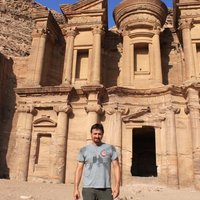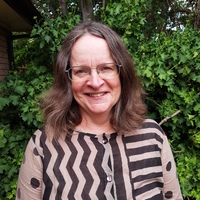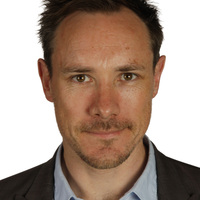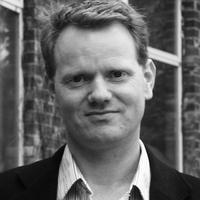
Adriana Muñoz
Phone: +46708444598
less
Related Authors
David Seamon
Kansas State University
Judith A. Miller
Emory University
Enrico Cirelli
Università di Bologna
Laurajane Smith
The Australian National University
Elisa Chiara Portale
Università degli Studi di Palermo
Rodney Harrison
University College London
Eszter Banffy
Hungarian Academy of Sciences
Niels Hahn
SOAS University of London
Lucie Carreau
University of Cambridge
David R. Howell
University of Gloucestershire
InterestsView All (10)










Uploads
Talks by Adriana Muñoz
There are many ways to tell a story and when it comes to repatriation, there are often multiple voices with different opinions. In the Yaqui case, there have been competing views on whether the objects should be returned. Some argued that they were stolen and should therefore be sent back. Others did not want the objects returned because it went against their ancestors' wishes to take back something that was once given as a gift.
Following a long process, it was decided that the ceremonial objects should be repatriated due to the fact that they were testimonies of an important period in Yaqui's history of deportation and life in exile.
The story of the Yaqui case is here presented in three films describing a repatriation case. The first film documents the process and relationship between Sweden and Mexico. The second film depicts the life of Yaquis today and their testimonies regarding this case. The third film describes a paralell research project designed to shed light on the multi- layered nature of this repatriation case.
Hoy, el proceso es aparentemente diferente. A nivel político el estado-nación esta pasando por momentos de crisis y encontrando nuevas formas. En este nuevo marco politico-ideológico los museos de Etnografía intentan redifinirse. En el caso de los Museos de la Cultura del Mundo en Suecia, el proceso de redifinicion comenzo en 1996 cuando el gobierno nacional decidió la creación de esta nueva administración gubernamental.
La pregunta es cual es la situación hoy, ¿qué objetos se recolectan para estas nuevas formaciones, quienes estan incluídos ó excluídos en este nuevo discurso?. ¿Es posible aún usar los objetos colectados en otra época en este nuevo paradigma?, ¿es posible de-colonizar las prácticas museales europeas de los museos de etnografía?. Con la ayuda de algunas colecciones americanas que hoy se encuentran en Suecia se intentará desarrollar estas preguntas.
However an intensive period of exchange and scientific contacts started with Erland Nordenskiöld’s travels to South America, continuing with Henry Wassén’s fieldwork in the area of Chocó. This period of organized fieldwork in the area of Darien and the Colombian Pacific Coast gave the start to a deep relationship which continued during all of the XX century.
Henry Wassén established a relationship with Gerardo Reichel-Dolmatoff, one of the most well-known anthropologists in Colombia (and South America) from the 1950’s to the 1980’s. Gerardo Reichel-Dolmatoff was born 1912 in Austria and died 1994 in Colombia. During more than 20 years they exchanged letters that are stored today at the archive of the Museums of World Culture.
This is a very important period in Gothenburg as well as in Bogota in the development of a new kind of Anthropological practice. The impact of the Second World War changed strongly the theoretical paradigm in sciences as well as the practice of these sciences. In Anthropology this meant the change from a more German theory and practice to an Anglo-American one. In this paper I would like to explore the relationship between Wassén and Riechel-Dolmatoff seen against the context of the wider changes in anthropology.
Papers by Adriana Muñoz
There are many ways to tell a story and when it comes to repatriation, there are often multiple voices with different opinions. In the Yaqui case, there have been competing views on whether the objects should be returned. Some argued that they were stolen and should therefore be sent back. Others did not want the objects returned because it went against their ancestors' wishes to take back something that was once given as a gift.
Following a long process, it was decided that the ceremonial objects should be repatriated due to the fact that they were testimonies of an important period in Yaqui's history of deportation and life in exile.
The story of the Yaqui case is here presented in three films describing a repatriation case. The first film documents the process and relationship between Sweden and Mexico. The second film depicts the life of Yaquis today and their testimonies regarding this case. The third film describes a paralell research project designed to shed light on the multi- layered nature of this repatriation case.
Hoy, el proceso es aparentemente diferente. A nivel político el estado-nación esta pasando por momentos de crisis y encontrando nuevas formas. En este nuevo marco politico-ideológico los museos de Etnografía intentan redifinirse. En el caso de los Museos de la Cultura del Mundo en Suecia, el proceso de redifinicion comenzo en 1996 cuando el gobierno nacional decidió la creación de esta nueva administración gubernamental.
La pregunta es cual es la situación hoy, ¿qué objetos se recolectan para estas nuevas formaciones, quienes estan incluídos ó excluídos en este nuevo discurso?. ¿Es posible aún usar los objetos colectados en otra época en este nuevo paradigma?, ¿es posible de-colonizar las prácticas museales europeas de los museos de etnografía?. Con la ayuda de algunas colecciones americanas que hoy se encuentran en Suecia se intentará desarrollar estas preguntas.
However an intensive period of exchange and scientific contacts started with Erland Nordenskiöld’s travels to South America, continuing with Henry Wassén’s fieldwork in the area of Chocó. This period of organized fieldwork in the area of Darien and the Colombian Pacific Coast gave the start to a deep relationship which continued during all of the XX century.
Henry Wassén established a relationship with Gerardo Reichel-Dolmatoff, one of the most well-known anthropologists in Colombia (and South America) from the 1950’s to the 1980’s. Gerardo Reichel-Dolmatoff was born 1912 in Austria and died 1994 in Colombia. During more than 20 years they exchanged letters that are stored today at the archive of the Museums of World Culture.
This is a very important period in Gothenburg as well as in Bogota in the development of a new kind of Anthropological practice. The impact of the Second World War changed strongly the theoretical paradigm in sciences as well as the practice of these sciences. In Anthropology this meant the change from a more German theory and practice to an Anglo-American one. In this paper I would like to explore the relationship between Wassén and Riechel-Dolmatoff seen against the context of the wider changes in anthropology.